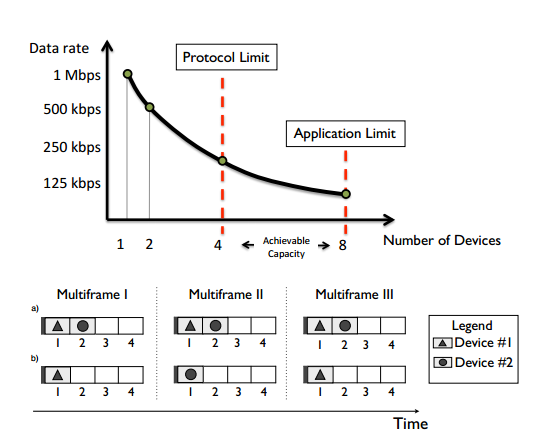How Intelligent Machines Could Take Over the GSM Network
Back in 1991, the then Finnish prime minister, Harri Holkeri, made a phone call that would go down in history, at least as far as trivia fans are concerned. This was the first call made using the GSM phone protocol that has since gone on to dominate mobile telecommunication networks around the world. In 2008, more than three billion people were connected to this network.

GSM is a so-called second generation technology and since then, it has been superseded by 3G and 4G networks. Now telecommunications policymakers around the world are considering switching off the GSM network and finding other uses for the radio frequencies allocated to it. The Chinese city of Macau is set to be the first, having planned to phase out its GSM networks from June next year.
That may be a shortsighted decision. Today, German Corrales Madueňo and a few pals at Aalborg University in Denmark, say that the GSM system should become a dedicated network for intelligent machines to communicate with each other. They have calculated the capacity of such a network and how it could become the communications backbone of a new generation of smart meters.
“Our findings shows that, with a suitable reengineering, GSM networks can support a surprisingly massive M2M (machine-to-machine) devices at even a single frequency channel,” say Madueňo and co.
One of the main challenge for network engineers is to find ways to increase the rates at which individuals can send and receive data. The latest 4G networks are capable of downloading data at rates of up to a gigabit per second. By contrast, GSM manages less than 300 kilobits per second. That is why GSM is becoming increasingly obsolete for smart phone users.
The challenge for machine-to-machine communication is different, however. Here the goal is not to increase the overall data rate but distribute it efficiently to many terminals. So the global coverage of GSM makes it an ideal vehicle for this kind of communication.
To find out whether the network could handle a future generation of smart meters, Madueňo and co calculated the numbers that are likely to appear in a standard suburban setting along with how often they are likely to send data and how much.
They assume that within 1,000 meter radius of a standard base station, with roughly three smart meters per home, there are likely to be over 20,000 devices competing to communicate over the network. These range from smart gas and electricity meters sending data every few minutes, to credit card machines in local shops and even traffic sensors and movie rental machines. Most are unlikely to send more than a few hundred bytes at a time and often very infrequently.
Madueňo and co say that the network can be made more efficient by assuming that many of the devices will have very similar requirements that can be catered for en masse with some straightforward engineering changes.
These changes should make the network more efficient. They go on to calculate that a GSM cell operating on a single frequency could support up to 70 messages per second. This translates into approximately 13,000 smart meters reporting every five minutes. That is 133 percent more than is possible with the current GSM network standards.
That is an interesting idea. If a global network had to be started from scratch to accommodate the communication requirements of smart meters, that would be a considerable challenge. So it makes sense to use an existing resource for this purpose.
Although the engineering challenges seem straightforward, a more difficult hurdle will be getting global agreement to use GSM in this way. Radio frequency real estate is a valuable commodity, so don’t be surprised if there is a fierce battle ahead for those who back this idea.
Ref: arxiv.org/abs/1410.6627 : Reengineering GSM/GPRS Towards a Dedicated Network for Massive Smart Metering
Keep Reading
Most Popular
Large language models can do jaw-dropping things. But nobody knows exactly why.
And that's a problem. Figuring it out is one of the biggest scientific puzzles of our time and a crucial step towards controlling more powerful future models.
How scientists traced a mysterious covid case back to six toilets
When wastewater surveillance turns into a hunt for a single infected individual, the ethics get tricky.
The problem with plug-in hybrids? Their drivers.
Plug-in hybrids are often sold as a transition to EVs, but new data from Europe shows we’re still underestimating the emissions they produce.
Stay connected
Get the latest updates from
MIT Technology Review
Discover special offers, top stories, upcoming events, and more.